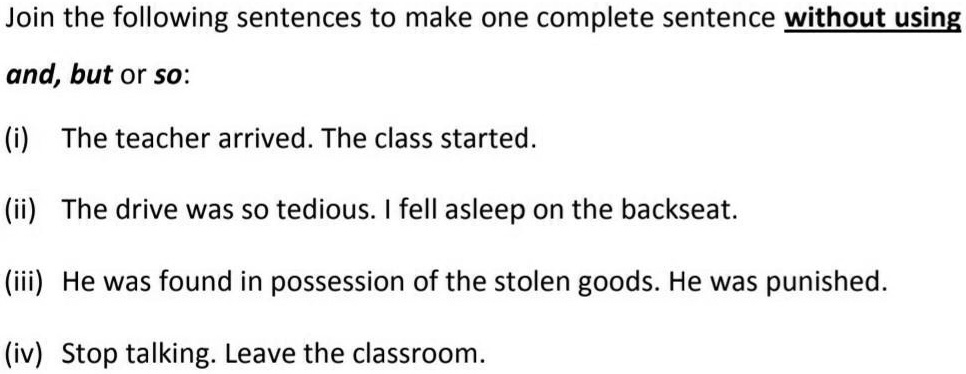Joining sentences without using "and" or "but" can be a challenging task for writers, as these conjunctions are often used to connect ideas and provide transitions in writing. However, there are many other ways to join sentences and convey a sense of connection between ideas.
One way to join sentences is through the use of subordinating conjunctions. These are words that introduce a dependent clause and connect it to an independent clause. Examples of subordinating conjunctions include "because," "while," "although," "since," and "until." For example, "I was late for work because my car wouldn't start" or "Although it was raining, I decided to go for a walk." Using subordinating conjunctions allows writers to create complex sentences that show cause and effect or contrast between ideas.
Another way to join sentences is through the use of transitional phrases. These phrases can indicate a variety of relationships between ideas, such as time, location, or contrast. Examples of transitional phrases include "in addition," "however," "on the other hand," "for example," and "as a result." Using transitional phrases can help writers smoothly transition between ideas and provide a sense of coherence in their writing.
Finally, writers can also use conjunctive adverbs to join sentences. Conjunctive adverbs are words that indicate a relationship between ideas and can be used to show cause and effect, contrast, or similarity. Examples of conjunctive adverbs include "therefore," "furthermore," "consequently," and "nonetheless." Using conjunctive adverbs can help writers create complex sentences and provide a sense of connection between ideas.
In conclusion, there are many ways to join sentences without using "and" or "but." By using subordinating conjunctions, transitional phrases, and conjunctive adverbs, writers can create complex sentences and provide a sense of connection between ideas.








